 Oscar® Winner for Best Picture, Directing, Actor in a leading role, Costume Design, Music (original score)
Oscar® Winner for Best Picture, Directing, Actor in a leading role, Costume Design, Music (original score)
The Artist
 for a disturbing image and a crude gesture.
for a disturbing image and a crude gesture.
Reviewed by: Scott Brennan
CONTRIBUTOR
| Moral Rating: | Average |
| Moviemaking Quality: |
|
| Primary Audience: | Teens Adults |
| Genre: | Romance Comedy Drama |
| Length: | 1 hr. 40 min. |
| Year of Release: | 2011 |
| USA Release: |
October 14, 2011 (festival) November 23, 2011 DVD: June 26, 2012 |
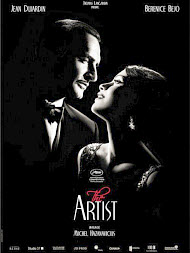


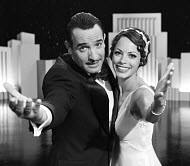
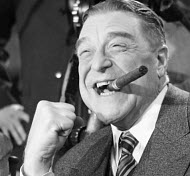

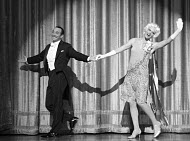
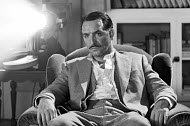
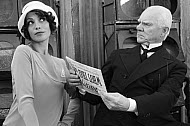
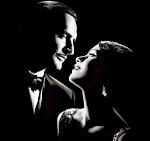
silent movie era
the impact of talking motion pictures on the silent film industry
The difference in acting styles between silent films and talkies.
The stock market crash of 1929.
DEPRESSION—Are there biblical examples of depression and how to deal with it? Answer
What should a Christian do if overwhelmed with depression? Answer
Clifton being so loyal to George that he keeps working for him without pay for more than a year.
| Featuring |
Jean Dujardin … George Valentin Bérénice Bejo … Peppy Miller John Goodman … Al Zimmer James Cromwell … Clifton Malcolm McDowell … The Butler Penelope Ann Miller … Doris Missi Pyle … Constance See all » |
| Director |
Michel Hazanavicius |
| Producer |
La Petite Reine La Classe Américaine See all » |
| Distributor |
What is an Artist? The meaning has changed much over the course of history, but it currently has a definition that is close to the following:
Artist— is a descriptive term applied to a person who engages in an activity deemed to be an art. An artist also may be defined unofficially as “a person who expresses him—or herself—through a medium.”
In the movie “The Artist” the story unfolds inside of a “silent film”, a medium where the lead characters express themselves marvelously without the use of words, relying only on body language and facial expressions to communicate.
When you think of the silent movie era, names like Charlie Chaplin and Buster Keaton come to mind, both iconic comedians of the early 20th century silent films. The silent film era was what put Hollywood on the map, producing upwards of 800 films a year and funneling them worldwide. There were also the adventures of Douglas Fairbanks and the romances of Clara Bow, just two of many Hollywood Stars made famous by the “studio system” which was also birthed during this period. However, once the “talkies” were introduced, the silent films began an immediate decline, and, by 1929, the year of the stock market crash, they were all but gone. Many major silent filmmakers and actors were unable to adjust to the demands of the new medium, and consequently their careers were temporarily derailed and, in some cases, ended altogether.
“The Artist” is a story centered on just this period in film history, written and directed by French filmmaker, Michel Hazanavicius. The movie opens with a handsome, confident, silent film star [reminiscent of a cross between Clark Gable and Rudolph Valentino] named George Valentine (Jean Dujardin) hamming it up both backstage and onstage when taking their bows for their performances in a film that had just ended in the theater. Accompanying Valentine in his films (and in his personal life) is a Jack Russell Terrier, you guessed it—named Jack, who adds a great deal of humor and love to the film as a whole, and who takes his own dog bows right from the beginning of the film, as well. What the story unveils is the historical impact of the “talkies” on the career of this cocky self-assured actor who is on top of his game and loved by the masses—so confident that he’s even willing to dish out advice to young aspiring actors like Peppy Miller, who ends up becoming more involved with him than he anticipated at their first meeting.
The question remains, will he make room for the up and coming young stars at his own peril. Will he succumb to the studio’s requests for more “talkies”? Will he insist on continuing to make his living using his body language alone to convey the emotion-filled stories to his adoring audience? Will the wannabe-young-starlet-fan he meets serendipitously on the studio set be a help or a hindrance to furthering his career? And just where does the man’s best friend, Jack (the Terrier), fit in the picture? All these questions are asked and answered in this simple, yet inspiring, film.
There is no doubt that the film is paying homage to a bygone era of Hollywood, oddly enough by a French filmmaker outside of that circle entirely. The critical acclaim by those inside the Hollywood set may be somewhat self-congratulatory, but, that said, it is a marvelous piece of filmmaking in its own right, nonetheless. After over 80 years of films with sound, it is an artistic achievement to recreate one without it. “The Artist” plays with a remarkable authenticity to the silent films of yore, ranging from detailed costumes, to creative camera techniques, like the iris, to stylized editing.
Undoubtedly, the success of such an accomplishment must be given to the actors—to some degree—who normally rely heavily on their voice to communicate the characters they play to a viewing audience. No surprise then that the lead character George Valentin (Gerard Dujan) is receiving such accolades for his performance, whose commanding presence is felt in each and every frame of the film. His co-star Berenice Bejo, plays the role of Peppy Miller, who breaks into the film business just as his career hangs in the balance, is also a strong performer. There are also great supporting roles of recognizable American actors including John Goodman (Al Zimmer), James Cromwell (Clifton the driver), and Penelope Ann Miller (Doris).
Objectionable content
There is a single scene in the early part of the film where a finely dressed woman uses her gloved middle finger to express her discontent. Additionally, one of the framed statements that flash on the screen periodically to express in written words what’s happening in the film includes a “d” word. There is no clarity as to who Doris is in relationship to George in the film, although they live together. It would appear that they are not married. In any case, he is flirting with Peppy while he is with Doris. There are no sex scenes or nudity. ***Spoiler*** During the buildup to the climax, there are some disturbing images which include a character setting his belongings on fire in a drunken stupor, along with another scene that is leading toward a potential suicide with a handgun. Both those scenes are precipitated by excessive drinking and smoking—the kind that comes with depression.
Spiritual impact and lessons
Henry Moore, a famous sculpture once said “To be and artist is to believe in life.” That theme seems to emerge with strength in the film, overall. There is a genuine love of life and respect for life that permeates the film, in spite of the suicidal depression that tries to take over a major character. While it doesn’t credit that love to the Author of Life Himself, it still resonates in this magical piece of art. Throughout the entire film, the unspoken encouragement to the artist in all of us, is perseverance, adaptation, and having a willingness to change. Proverbs 16:18 is most clearly illustrated in this story, in an almost palpable way: “Pride goes before destruction and a haughty spirit before a fall.” While I won’t give away the ending, Proverbs 18:16 has relevance. “A man’s gift maketh room for him and bringeth him before great men.” For the Christian, that gift is on the inside of us, wanting to come out, if our pride can just stay out of the way. We are the vehicle that God wants to use, like an artist painting a blank canvas.
Violence: Moderate / Profanity: Minor / Sex/Nudity: None
See list of Relevant Issues—questions-and-answers.


This film is definitely reminiscent of classic silents “The Gold Rush,” “The Mark Of Zorro” and many others. Only fans of black-and-white and silent films would appreciate this movie, but it’s definitely a crowd-pleaser, with something for everyone. Clean comedy ala “The Thin Man” starring William Powell and Myrna Loy, chaste romance in the vein of “The Gold Rush” starring Charlie Chaplin and a great story like the best silent and sound movies (“The Mark Of Zorro” starring Douglas Fairbanks, “Singin” In The Rain,” “All About Eve,” “Casablanca,” the 1923 and 1956 versions of “The Ten Commandments,” the 1925 and 1959 versions of “Ben-Hur,” “Gone With The Wind”… and the list goes on).
There’s also a nice dash of “Vertigo” in here. Excellent acting, writing, music and direction. Everything about this movie is top-notch. This one-of-a-kind motion picture should definitely be nominated for and win Best Picture and all the major awards at the Golden Globes and the Oscars.
Biblically speaking, there’s only one scene where a woman flips a main character off, a brief disturbing image at the beginning, and a mild curse word towards the end of the film which shows up in the inter titles. No sex, violence, or strong language, this is definitely a movie straight out of the 1920’s and 1930’s. Could easily have been rated PG instead of PG-13, but apparently, the MPA thought that a higher rating, despite the minimal content enumerated above, would attract more people.
Moral rating: Good / Moviemaking quality: 5
I liked it in black and white. This movie is in a genre of its own, since it’s not indie realism nor comedy nor documentary.
A central theme that sustained my interest in the movie was the love and dedication of a new starlet for the distraught leading silent film star who had discovered her.
Moral rating: Better than Average / Moviemaking quality: 4½
In general, there are a lot of long shots and various depth of field shots and scene blocking common to the black and white era and in particular, a few that remind me of Citizen Kane. There’s also a nifty 3-story, cross-sectional stairwell view about where the 2nd act begins that takes the POV way out from the action, yet flush with it. It’s a completely static shot that seems more in tune with a stage play look and dated long shots than modern cinema. A good man named Steve from around these parts says you can’t have dead space in your sound mixes. We are always hearing. Listening is not a passive activity like seeing is… there are perceptible sounds in even the deadest, most sound-proofed of spaces like an anechoic chamber.
Yet, despite Steve’s cardinal rule of sound mixing, “The Artist” has a few spots where there is literally no audio. It is deathly silent, and I imagine this is in keeping with the nature of the live performances that accompanied silent films. Think about it. A live ensemble with real, living, breathing, probably bipedal people had to pause every now and again before launching into a new number.
This is a very clean film, and I’m still puzzled why it obtained a PG-13 rating. However, that’s not to say it’s your usual family-friendly fare. The Artist is historical fiction (in some sense) that’s geared for adults and fans of cinema.
Moral rating: Good / Moviemaking quality: 5
Moral rating: Better than Average / Moviemaking quality: 5
The only moral one could draw from this is: If you happen to be a handsome celebrity, you can live your life however you choose; because fate, the world, and a beautiful young woman will come to your rescue. Only members of the motion picture academy could find such a premise laudable. The popcorn was the only thing I enjoyed. If you are looking for a good homage to early movies, watch “Hugo.”
Moral rating: Average / Moviemaking quality: 1
PLEASE share your observations and insights to be posted here.

The historical attention to detail, put into the 1920’s sets and costumes, is extremely well done.
If you have a teenager interested in classic films of this era, it is important to note that the movie shows the main character drinking alcohol, as he loses his fame, and, towards the end, he nearly commits suicide. For this reason, I recommend viewing the film first, to judge whether it would be appropriate for a teenager.
Although the story line leans to the melancholy side, there are many humorous moments and lighthearted scenes. Similar to many silent films of Buster Keaton and other actors of that time period, this movie shows the hard realities of life lived out with amusement and sentiment. The qualities of loyal friendship, effects of pride and genuine concern for a person who is down and out, are evident throughout.
Ultimately, the film ends on an uplifting note, and I left the theater with many warm, happy, silent images on my mind.
My Ratings: Moral rating: Good / Moviemaking quality: 5